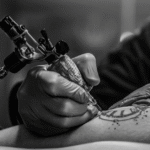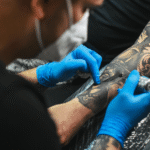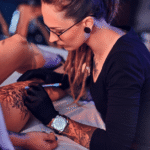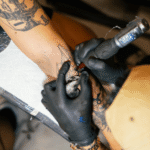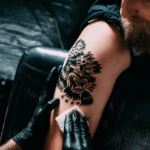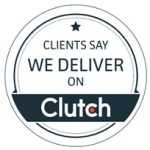Your Artist Portfolio Looks Great But Is It Findable?
Most tattoo artists have amazing portfolios but only their existing followers ever see them. Why not? Because their portfolio pages aren’t optimized to rank in Google.
SEO for tattoo studios isn’t about your homepage alone. Your artist pages can pull in traffic, build trust, and drive direct bookings when done correctly. Tattoo Shop Digital Marketing has helped dozens of studios transform static artist pages into high-performing SEO assets.
In this guide, we’ll show you how to turn those beautiful portfolio galleries into booking machines that bring in more local clients searching for specific tattoo styles.
Why Artist Portfolio Pages Are SEO Gold (If You Use Them Right)
Each artist likely specializes in a style, and those specializations are valuable keywords. Someone searching for “blackwork tattoo artist in Austin” or “fine line tattoo Miami” represents high-intent traffic ready to book.
Google can rank each artist page individually, boosting your overall site visibility. These pages are evergreen, visual, and local perfect ingredients for search success. Instead of competing with one generic “tattoo shop” page, you’re creating multiple entry points for different customer searches.
Think of each artist page as a mini landing page for their specific style and local area. When optimized properly, these pages capture traffic that your competitors miss.
Step 1 Choose the Right Keywords for Each Artist
Use style plus location combinations like “fine line tattoo artist Miami” or “traditional sleeve tattoos Chicago.” Avoid vague terms like “Portfolio 1” or “Gallery” that tell Google nothing about the content.
Research what people search for using Google’s autocomplete suggestions. Type “traditional tattoo artist” and see what locations and modifiers appear. Tools like Ubersuggest or Semrush can reveal search volumes, but even basic Google research provides valuable insights.
Focus on 2-3 primary keywords per artist page. Don’t try to rank for every style if the artist specializes in specific techniques.
Step 2 Optimize the Page Title, H1, and Meta Description
Create consistent title formats across all artist pages. Here’s an effective example:
Title: “Traditional Tattoo Artist | Emily R. | LA Ink Gallery”
Meta Description: “Explore Emily R’s traditional tattoo portfolio in Los Angeles. Bold lines, classic colorwork, and expert shading. Book a session today.”
Your H1 should include the artist’s name and primary style. Keep meta descriptions under 160 characters while highlighting the artist’s specialty, location, and a clear action.
Step 3 Write a Strong, Keyword-Infused Bio
Don’t settle for “Emily has 10 years experience.” Instead, write something like this:
“Emily specializes in bold traditional tattoos, classic sailor-style sleeves, and American traditional flash. Based in Los Angeles, she blends timeless tattooing techniques with modern precision. Her portfolio features vibrant pin-ups, nautical themes, and iconic Americana designs.”
Use 150-200 words that naturally incorporate local cues, style references, and the artist’s unique approach. This gives Google context while helping potential clients understand what makes this artist special.
Step 4 Image Optimization Matters More Than You Think
Use descriptive filenames instead of generic camera names. Change “IMG_2847.jpg” to “neo-traditional-rose-arm-tattoo-emily-la.jpg.”
Write detailed alt text like “Neo-traditional rose tattoo on inner forearm by Emily, Los Angeles artist specializing in colorwork.” This helps Google understand image content while improving accessibility.
For advanced optimization, add location-based EXIF data to images when possible. This reinforces your local relevance signals.
Step 5 Add Internal Links from Homepage, Booking Page & Blog
Link strategically from your “Our Artists” page to each portfolio. Cross-link blog content like “Best Minimalist Tattoo Ideas” to relevant artist pages. This improves crawlability and guides users through your site naturally.
Create topic clusters where blog posts about specific styles link to artists who specialize in those techniques. This strategy, often used in comprehensive SEO for tattoo shops, helps establish topical authority and drives qualified traffic to individual artist pages.
Step 6 Include On-Page Trust Builders
Add Google review snippets, artist-specific testimonials, and studio hygiene photos or certifications. Use microcopy under CTAs like “Custom designs. 5-star rated. Fully licensed.”
Trust signals become especially important for high-involvement purchases like tattoos. People want to see proof that others have had positive experiences with specific artists, not the shop in general.
Step 7 Use Clear CTAs: Don’t Make Them Scroll and Leave
Avoid vague CTAs like “Contact for info” or “See more work.” Use specific, action-oriented language such as “Book with Emily,” “Check availability,” or “Request a consultation.”
Consider embedding booking calendars per artist using tools like Calendly, GlossGenius, or Square. This removes friction between interest and action. Professional tattoo web design integrates these booking tools seamlessly into artist pages, creating a smooth user experience that converts browsers into clients.
Turn Your Portfolio Into a Local Landing Page
Add service area information like “Serving Portland, Beaverton, and Hillsboro.” Embed Google Maps and include practical details about directions or parking.
This local optimization helps boost your visibility in local pack rankings, especially when combined with proper schema markup and consistent NAP (Name, Address, Phone) information across all artist pages.
Common Mistakes That Kill Artist Page Performance
The biggest mistake is having no written bio or headings, which means no keyword opportunities. Massive image galleries with zero text context tell Google nothing about the content quality or relevance.
Missing CTAs equal zero conversions. Many studios link portfolios only on Instagram instead of making them discoverable through their website. This wastes valuable SEO potential and makes it harder for new clients to find and book specific artists.
Turn Your Artist Pages Into Booking Machines
At Tattoo Shop Digital Marketing, we help studios rank and convert with high-performing website content, smart SEO strategies, and conversion optimization that gets results. We understand the unique challenges of marketing tattoo businesses and know what drives bookings.
Your artist portfolio pages represent untapped SEO potential. When optimized correctly, they become powerful tools for attracting local clients searching for specific tattoo styles and building trust before visitors even walk through your door.
Ready to see what your artist pages could be doing for your business? Schedule your free consultation today and let’s turn your beautiful portfolios into client-generating assets.


